How to Sell Bitcoin
Introduction
Once you’ve bought some Bitcoin, it can be quite a process figuring out how to sell Bitcoin afterwards.
In this guide, we’ll make selling Bitcoin a breeze and let you know how to sell your Bitcoin easily on some of the most popular Bitcoin exchanges, including Coinbase, Binance, Changelly, BitMEX, HitBTC, and LocalBitcoins. You’ll also learn how to keep track of all your sales as well as potentially dive deeper into the market with charting and technical analysis.
Where to Sell Bitcoin
There are several places to sell your Bitcoin but we’ll go over some of the easiest and most popular ones.
Selling Bitcoin on Coinbase
Coinbase is one of the most popular exchanges for buying and selling cryptocurrencies like Bitcoin. This is probably due to how easy the platform is to use as opposed to other exchanges, which might be more oriented towards those familiar with trading platforms.
To sell Bitcoin on Coinbase, login to your account and send Bitcoin to your Coinbase wallet (if it’s not there already).
This can be done by going to the “Accounts” tab at the top of Coinbase and depositing BTC to your Coinbase BTC wallet (hit “Receive”).
Afterwards, go to the Buy/Sell tab to sell BTC from your BTC Wallet and send the proceeds to your preferred linked account, such as your bank account.
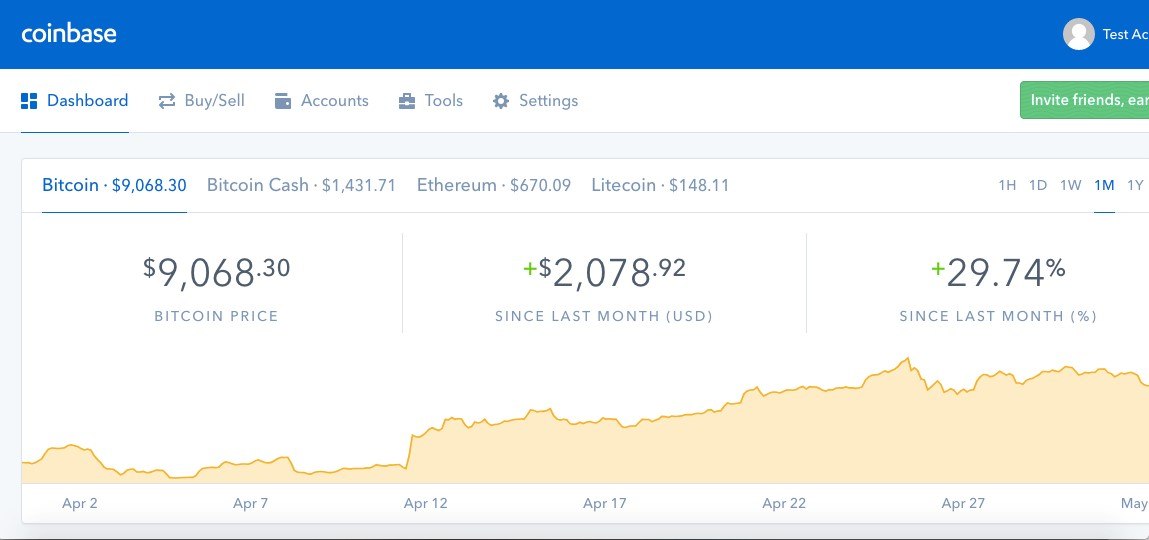
Selling Bitcoin on Binance
Binance is another hugely popular cryptocurrency exchange where you can sell your Bitcoin. However, Binance is cryptocurrency-only and you can only sell your Bitcoin for other cryptocurrencies (in other words, buy other cryptocurrencies using Bitcoin). Luckily, there is a huge array of cryptos to choose from, including Ethereum, Litecoin, and Bitcoin Cash as well as some relatively obscure ones.
Although Binance isn’t as easy to use as Coinbase, its huge selection of cryptocurrencies is a big draw for many.
For beginners, the easiest way to sell Bitcoin on Binance is to deposit Bitcoin to your account and then go to whichever cryptocurrency you wish to buy with your Bitcoin. Scroll to the bottom where it says “Buy *Insert Desired Crypto Here*” then place a market order (an order based on currently available market prices).
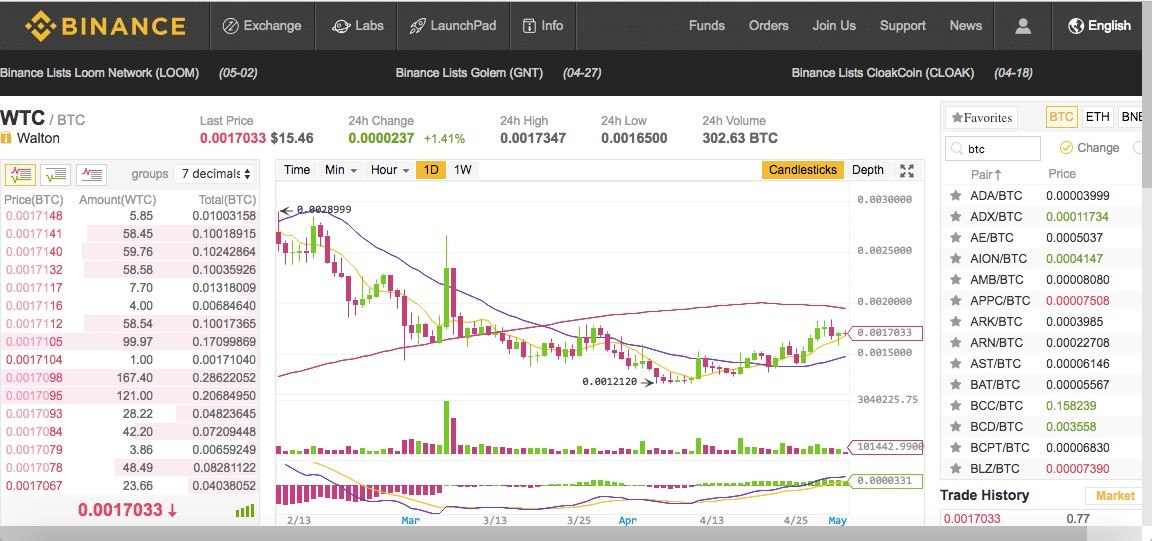

(For example, instead of selling Bitcoin for dollars or other fiat currencies, you could sell it for cryptocurrencies like Walton).
Selling Bitcoin on Changelly
Changelly is another place that you can easily sell your Bitcoin.
While you can buy Bitcoin on Changelly using fiat currencies, such as the dollar and euro, you cannot sell Bitcoin on Changelly for fiat currencies. Instead, you have to sell your Bitcoin for other cryptocurrencies just like on Binance.
Nevertheless, Changelly, too, has quite a broad selection of cryptos to choose from, and you can sell BTC for cryptos including but not limited to Monero, Dash, Ripple, Ethereum, Ethereum Classic, Litecoin, and EOS.
Just enter how much BTC you want to sell using the box on the left, then select the crypto you want in return on the right. Changelly will calculate how much of the other crypto you get using real-time exchange rates.
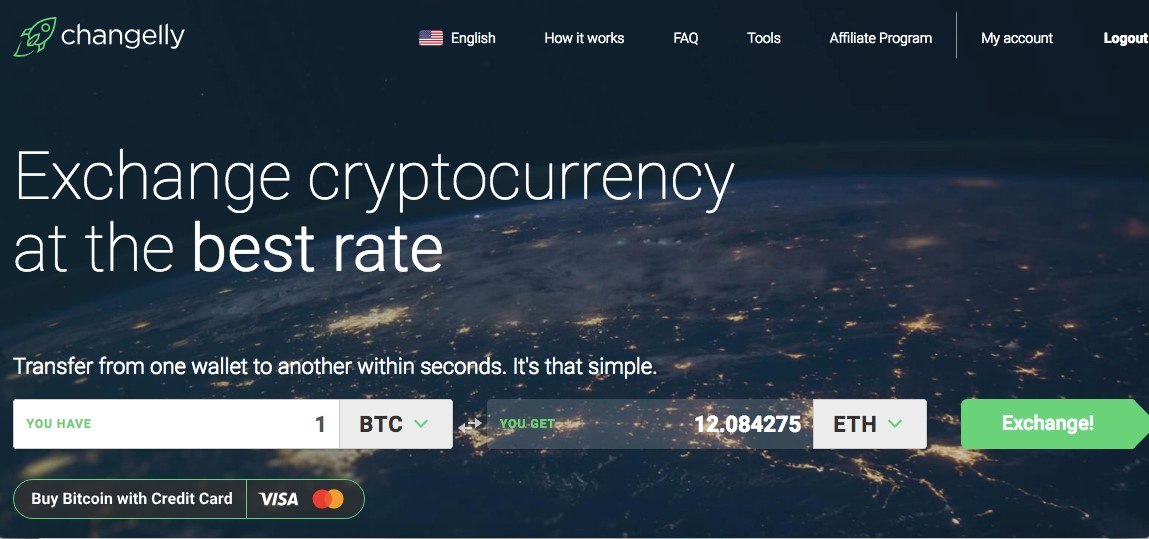

Selling Bitcoin on BitMEX
BitMEX is another exchange for selling Bitcoin. BitMEX is different from the exchanges covered thus far as it is most definitely geared towards experienced traders. For example, it offers trading on leverage, which can be great for selling Bitcoin if you want to short the market because you believe that the price of Bitcoin will drop.
BitMEX offers various order types: limit orders, market orders, stop orders, stop limit orders, trailing stop orders, take profit limit orders, and take profit market orders.
Each of these order types can be further customized as well.
Note that all BitMEX trading (both buying and selling) is done in Bitcoin. For example, if you successfully short Bitcoin, any potential profit is calculated in Bitcoin, which you can then withdraw to other places for selling to fiat or different cryptos.
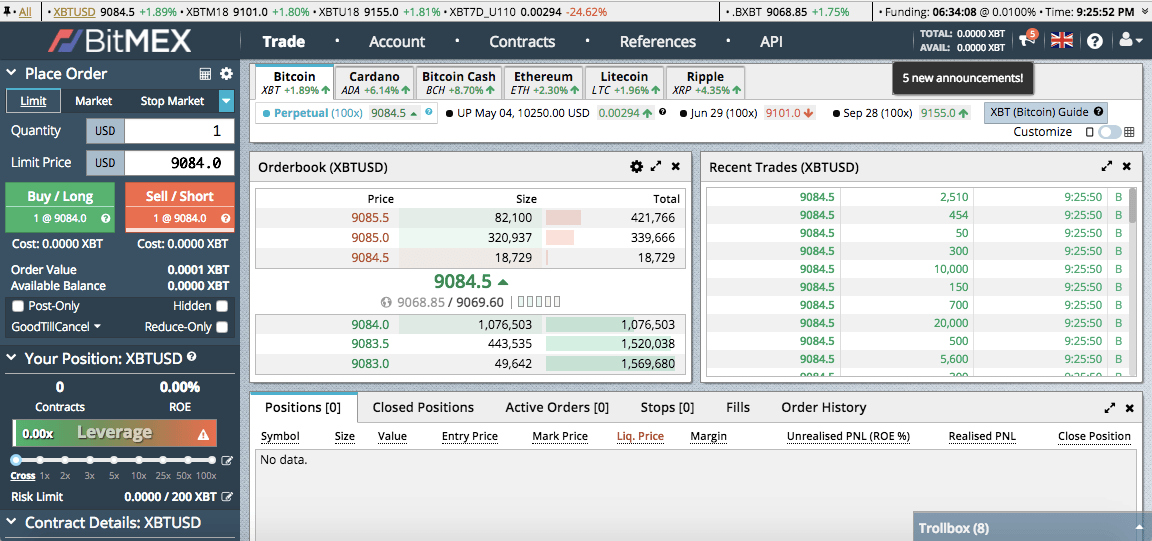

Selling Bitcoin on HitBTC
HitBTC is yet another exchange for selling Bitcoin. HitBTC is similar to Binance in that you can sell your Bitcoin for a wide array of cryptocurrencies, such as Ethereum, Monero, Dash, ZCash, Ripple, EOS, and more. Also, as with Binance, you are technically buying other cryptocurrencies by selling your Bitcoin for them with the exception of Tether (value pegged to the dollar), which offers a more intuitive Sell BTC for Tether option.
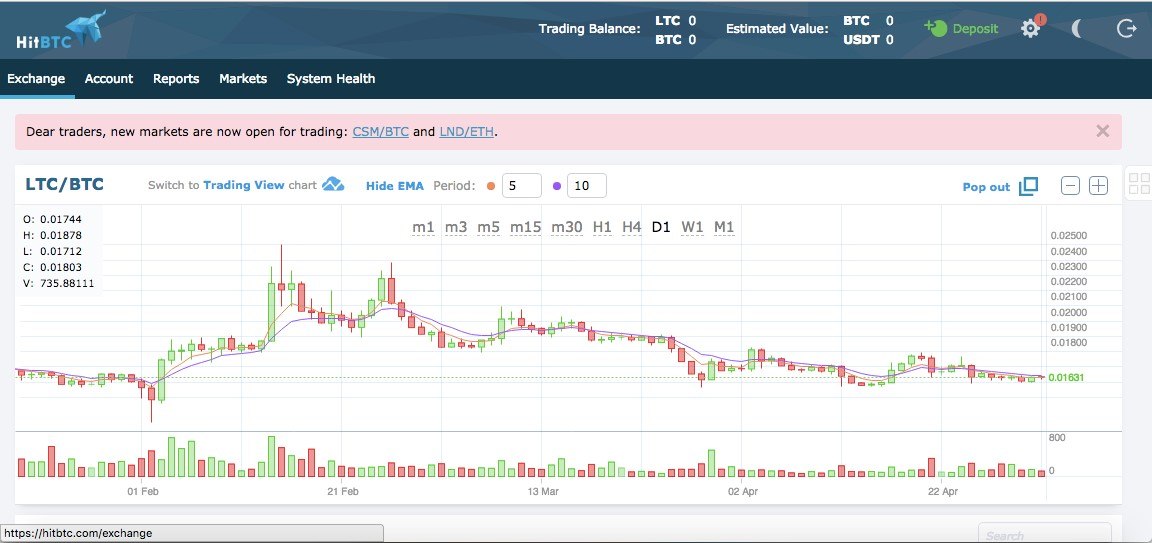
Selling Bitcoin on LocalBitcoins
LocalBitcoins is another place to sell Bitcoin but is different from the exchanges covered up to this point. Unlike other exchanges, which act as market makers or trade matching platforms, LocalBitcoins is a peer-to-peer (p2p) exchange. LocalBitcoins merely acts as a middleman between buyers and sellers of Bitcoin and provides an escrow service to help prevent fraud.
LocalBitcoins users can sell their Bitcoin for different currencies and other types of value. In the United States, users can sell Bitcoin for dollars via bank transfers, Paypal, Moneygram, and Western Union. If users want some sort of payment other than cash, they can even sell Bitcoin for things like gift cards on Amazon and Ebay.
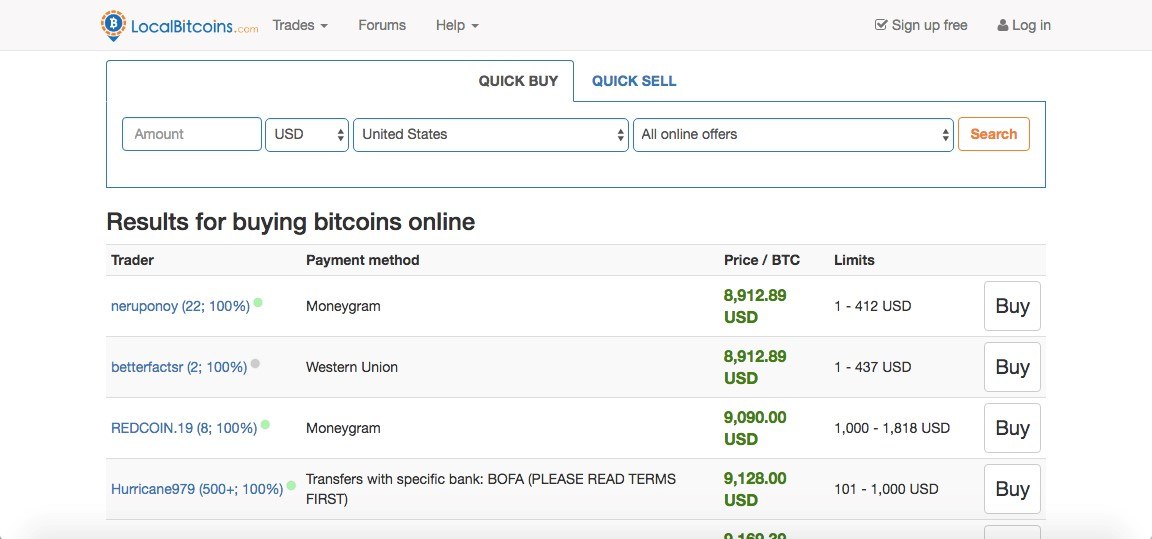

Tracking Bitcoin Sales – Cointracking
For those selling Bitcoin frequently, it can be frustrating trying to log all of your trades for accounting and tax purposes. Instead of using an Excel sheet, many sellers of Bitcoin opt for more convenient options, such as CoinTracking.info, which takes your Bitcoin sales from different exchanges and platforms then generates reports on coin value, profit and loss, realized and unrealized gains, estimated taxes, and more.
Trading Charts – TradingView and Coinigy
If you’re looking for advanced charting and technical analysis options to take a deeper look at the Bitcoin market, TradingView and Coinigy are two of the most well known options amongst buyers and sellers of Bitcoin. Both have free and paid user accounts.
Of the two, TradingView is more popular amongst Bitcoin traders. The site’s free plan gives you three indicators per chart as well as one indicator template. On top of the free plan, other factors that draw users to TradingView is that the paid option is slightly cheaper than Coinigy’s, but still offers real-time data options, faster data flow (compared to TradingView’s free option), and no ads. Users can try the paid plan with TradingView’s free 30-day trial.
Another thing that people like about TradingView is its social aspect – users can view other users’ analyses, make comments (and potentially friends), and even post analyses of their own and get feedback. As such, TradingView is a great place for those who want to learn more about charting and technical analysis.
Coinigy is also a solid option to consider. It offers a free option but paid subscribers can take advantage of data from 45 exchanges, use Coinigy’s mobile app, receive email and SMS price alerts, and experiment with over six dozen technical indicators.
On top of its vast exchange support, Coinigy has support for more altcoins (cryptos other than Bitcoin) than TradingView and API support. As such, Coinigy might be a better charting and technical analysis option for serious traders.
Conclusion
If you got this far, congratulations!
Selling Bitcoin isn’t always easy the first time around. Regardless, after reading this guide, you should know everything you need to get started selling your first Bitcoin, keeping track of trades, and potentially analyzing the market.
Related Articles
How to Sell Bitcoin
Introduction Once you’ve bought some Bitcoin, it can be quite a process figuring out how to sell Bitcoin afterwards. In this guide, we’ll make selling Bitcoin a breeze and let you know how to sell your Bitcoin easily on some of the most popular ...How to Buy Bitcoin
Introduction The process of buying Bitcoin can definitely be confusing if you’re new to cryptocurrency. With this guide, you’ll learn how to buy Bitcoin using some of the most popular Bitcoin buying options and exchanges, store your Bitcoin safely, ...How to Buy Bitcoin
Introduction The process of buying Bitcoin can definitely be confusing if you’re new to cryptocurrency. With this guide, you’ll learn how to buy Bitcoin using some of the most popular Bitcoin buying options and exchanges, store your Bitcoin safely, ...Getting Started with Bitcoin Mining
What is Bitcoin mining? Bitcoin mining uses computing processing power to run SHA256 double round hash verification processes to validate Bitcoin transactions and provide the requisite security for the public ledger of the Bitcoin network. Computing ...Getting Started with Bitcoin Mining
What is Bitcoin mining? Bitcoin mining uses computing processing power to run SHA256 double round hash verification processes to validate Bitcoin transactions and provide the requisite security for the public ledger of the Bitcoin network. Computing ...